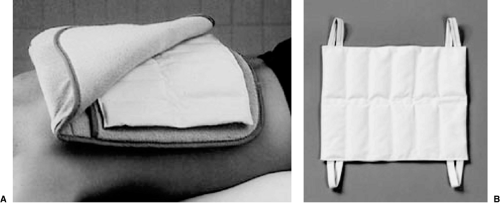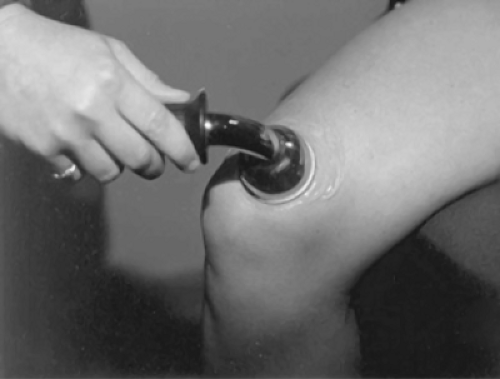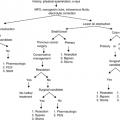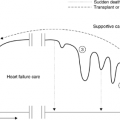Physiatric Approaches to Pain Management
Andrea Cheville
Lauren Shaiova
Rehabilitation has too often remained marginalized in the care of patients with cancer. The perception that rehabilitation only offers meaningful benefit to patients capable of full community and vocational integration with unrestricted life spans is inaccurate and shortsighted. Although physiatry, or physical medicine and rehabilitation, initially emerged as a field dedicated to transforming individuals stricken with anatomically disruptive injuries back to their productive lives, the scope of the field has broadened considerably as medicine has altered the prognoses of many formerly fatal diseases. Integration of rehabilitation services in the care of patients with far-advanced pulmonary and cardiac disease has become standard. Similar services are rarely offered to patients with cancer, even in the early stages of disease.
Physiatric strategies geared toward enhancing pain control can be loosely grouped into three categories:
Nonpharmacologic nociceptive modulation
Adaptive functional training to allow pain-free mobility and self-care
Restoration or preservation of normal biomechanics
These categories are theoretically separate but highly interrelated in practical application. Similar interventions are used to realize the goals of each strategy. It is helpful, however, to consider them individually in developing an integrated plan to control pain, enhance function, and preserve autonomy. The purpose of rehabilitation as outlined in this chapter is to improve the quality of life and survival irrespective of anticipated survival.
Formulation of an Integrated Pain Management Program
Rehabilitative strategies fail in the absence of effective pain control. Adequate pharmacologic analgesia lays a foundation on which physiatry can begin the work of advancing patients from a state of static pain control to that of dynamic pain control. Pain management services allow rehabilitation professionals to effect functional gains and realize therapeutic goals. In turn, information gleaned during attempts to mobilize patients permits refinement of analgesia. Successful pain control is never achieved until the patient moves. For example, formerly mild rest pain related to osseous metastases may become intensely problematic during attempts to transfer and ambulate.
Rehabilitation is an essential component of integrated pain management geared toward symptom control and autonomous function. Ideally, physiatric approaches are seamlessly combined with disease-modifying, pharmacologic, and interventional analgesic strategies. This chapter addresses the three general categories of physiatric interventions (nociceptive modulation, achievement of pain-free function, and restoration of normal biomechanics). Approaches common to each are described, with special attention to the efficacy and limitations in cancer.
Nonpharmacologic Nociceptive Modulation
The capacity of thermal, manual, and electrical modalities to alleviate pain has long been recognized by clinicians. The classical Hippocratic texts outline the use of heat and massage to enhance comfort and reduce the virulence of disease (1). Investigative efforts have revealed the tremendous complexity of the neuroanatomic apparatus subserving nociception. Physiologists are now able to partially explain long-standing clinical observations. This understanding has led to increasing support for the use of manual, thermal, and electrical modalities in conjunction with conventional analgesic therapies.
Massage
Massage is one of the oldest and most widely accepted forms of treatment. Today >75 types of massage are practiced. Some forms are ancient, dating back over thousands of years (2). There has been a considerable increase in the popularity of massage over the last decades. Its use in the treatment of illness ranging from minor myalgias to systemic diseases has become accepted. The physiologic effects of massage have been credited with promoting healing, restoring function, and enhancing physical performance. Specifically, massage is described as assisting with circulation and lymphatic drainage, enhancing the elastic and inelastic properties of connective tissue and muscle, fostering relaxation, counteracting edema, and alleviating muscle pain (3, 4, 5, 6, 7). There are many different schools of massage therapy offering a wide variety of approaches for different clinical indications. Those that are most common or relevant to cancer are discussed in subsequent text.
Malignancy was cited as a relative contraindication to massage in the past. The concern stems from the possibility that massage may accelerate dissemination of malignant cells by
enhancing the flow of lymph and blood. Several facts illustrate the limitations in this line of reasoning. First, aerobic exercise is a more potent stimulant of blood and lymph flow than massage (8). No association between aerobic exercise and the acceleration of malignant spread has even been suggested. Second, manual lymph drainage, a massage technique specifically designed to enhance the transport capacity of the lymphatic system, is used extensively in the treatment of lymphedema (9). Despite documented acceleration of lymph transport, manual lymph drainage has never been reported to potentiate recurrence or dissemination of cancer cells.
enhancing the flow of lymph and blood. Several facts illustrate the limitations in this line of reasoning. First, aerobic exercise is a more potent stimulant of blood and lymph flow than massage (8). No association between aerobic exercise and the acceleration of malignant spread has even been suggested. Second, manual lymph drainage, a massage technique specifically designed to enhance the transport capacity of the lymphatic system, is used extensively in the treatment of lymphedema (9). Despite documented acceleration of lymph transport, manual lymph drainage has never been reported to potentiate recurrence or dissemination of cancer cells.
Traditional Swedish Massage
Four basic strokes are used in Swedish massage. These include effleurage, petrissage, friction, and tapotement. Effleurage is a gentle stoking motion that can be applied with varying degrees of force. Superficial stroking has beneficial effects on muscle hypertonicity. It also stimulates the flow of lymph and venous blood. Petrissage is a more vigorous motion that involves kneading muscles and other soft tissue, at times with considerable force. Petrissage is utilized to break up tissue and muscle adhesions. Friction massage involves repetitive circular motions applied with pressure to a small area of tissue. Friction is useful in interrupting muscle hypertonicity. Tapotement involves repetitive alternating movements of the hands. The goal of treatment will determine the rapidity and force of tapotement. Used in concert, the four basic Swedish massage strokes provide tremendous versatility. Each stroke can attenuate most of the pain through counterstimulatory and autonomic effects. Patients with cancer frequently develop muscle pain generators through the adoption of aberrant movement patterns and secondary muscle overuse. Swedish massage can eliminate muscle pain arising from focal hypertonicity, although lasting relief will not be achieved until the causative movement patterns are addressed. Many specialized massage techniques, including those discussed in subsequent text, are refinements of the basic Swedish strokes.
Myofascial Release
Myofascial release techniques are used to restore normal length–tension relationships to muscles and fascia. The capacity of hypertonic muscles to function as pain generators is well established. The potential contribution of contracted fascia to musculoskeletal pain is less appreciated.
Fascia occurs ubiquitously throughout the body’s supporting muscles, joints, and viscera. It is densely innervated with nociceptors and can therefore serve as an independent pain generator. Ideally, fascia moves freely in synchrony with the motion of muscles and joints. Many conditions associated with cancer can produce fascial contractures. Examples include radiation fibrosis, immobility, postsurgical scarring, and pain-engendered muscle spasms. Contracted fascia may become painful at rest or with the minimal tension required by routine daily activities. Fascial release techniques are used to release the contracted fascia. Practitioners use vigorous “hands-on” compression and stretching to alter the mobility of affected tissues. Multiple sessions with a skilled practitioner are generally required. Often fascial contractures must be addressed before patients can tolerate therapeutic exercise or aerobic conditioning. Trigger point release involves the strategic application of pressure to discrete foci of increased muscle tone, called trigger points. Sustained pressure is applied to a circumscribed, symptomatic area in conjunction with passive range of motion.
Manual Lymphatic Drainage
Manual lymphatic drainage (MLD) or “lymphatic massage” is a highly specialized technique designed to enhance the sequestration and transport of lymph. Specific stroke duration, orientation, pressure, and sequence characterize MLD. This technique stimulates the intrinsic contractility of the lymph vessels, leading to increased interstitial protein sequestration and transport. Through gentle and rhythmic skin distension, congested lymph is directed through the lymphatic system into intact nodal basins. MLD permits shifting of congested lymph to lymphotomes (anatomic regions drained by a specific lymph node bed) with preserved drainage. The massage is very light and superficial, limited to finger/hand pressures of around 30–45 mm Hg. MLD treatments are initiated proximally in lymphostatic regions adjacent to functioning lymphotomes. Lymph is constantly directed toward functional lymph node basins with strategic hand movements. The treatment gradually progresses distally to terminate in the regions farthest removed from intact lymphatics. Cancer treatment is the most frequent cause of lymphedema in developed countries. Progression of disease generally worsens the lymphedema. It may also trigger the onset of lymphedema through nodal infiltration, immobility, and malignant compression of lymph vessels. MLD is safe and can produce surprising levels of analgesia. The latter finding is presumably due to counterstimulatory effects.
Thermal Modalities
This part of the chapter focuses on thermal modalities in the treatment of cancer-related pain. Thermal modalities have been used by physiatrists for many medical conditions associated with disabilities. Thermal modalities commonly employed in rehabilitation medicine include topical heat and cold, hydrotherapy, heat lamps, ultrasound, diathermy, fluidotherapy, and paraffin baths. Each of these is discussed in the following section on modalities used to treat pain in patients with cancer.
Therapeutic Heat
The following discussion is limited to local applications of heat and cold as they pertain to cancer pain management and symptom control. There are three primary modes of heat transfer:
Conduction, which includes hot packs and paraffin baths
Convection, which includes fluidotherapy, hydrotherapy, and moist air
Conversion, which includes radiant heat, laser, microwaves, short waves, and ultrasound
Superficial heating modalities are discussed initially and deep heating modalities subsequently in this section. The integrity of sensation in the area must be tested. Sensory deficits are not an absolute contraindication to the use of heat, but should inform treatment duration and temperature.
Hot packs or hydrocollator packs. Topical heat treatments attempt to warm tissues to between 40 and 45°C. They are primarily used to increase the mobility of a joint or the extensibility of collagen tissue; decrease muscle spasm; assist in the resolution of inflammatory infiltrates, edema, or exudates; increase blood flow; and afford analgesia. Hot packs, also referred to as hydrocollator packs (Fig. 6.1), are the best-known conductive modality. These packs are available in various sizes and consist of canvas bags filled with silicon dioxide, which absorbs many times its own weight in fluid, acquiring a large heat capacity. Heat is used as a part of cancer therapy and rehabilitation, but certain safeguards must be applied when it is used (10, 11). The potential of heat to influence tumor growth is inadequately characterized but should be respected. Heat should not be applied directly to the site of primary tumor or metastases. The advantages of hot packs are many,
including low cost and long life, suitability for use at home and in the hospital, patient satisfaction, and ease of use.
including low cost and long life, suitability for use at home and in the hospital, patient satisfaction, and ease of use.
Hydrotherapy. Whirlpool baths and Hubbard tanks are common forms of hydrotherapy. These units, which agitate water, are safe and provide convective heating, massage, and gentle debridement. Treatment goals of hydrotherapy include joint mobilization, debridement, or wound therapy. Temperatures can be adjusted, making this a safe technique for patients with cancer (12, 13). Hydrotherapy tanks can be used to immerse the whole body. This is useful in a patient with a large surface area that needs to be treated.
Paraffin baths. The typical paraffin bath is a container filled with a mixture of mineral oil and paraffin maintained at a temperature of 54°C. Although this temperature is somewhat higher than that in water-based therapy, it is tolerated because the mixture has a low heat capacity and an insulating layer of wax builds up on the treated area (14). There are two types of paraffin treatments. One is the dip method, in which a patient repeatedly dips a joint or extremity into the bath, removing the joint between dips to allow the paraffin to solidify. The area is covered or wrapped with plastic for approximately 20 minutes. The paraffin is then stripped off and placed back into the bath.
In the alternate technique the continuous immersion method is used on the affected part of the patient for 20–30 minutes at a time. Heating with this approach ensures a more intense warming of the joint or extremity; this is tolerated because a layer of solid insulating paraffin forms on the skin (15, 16). This modality is useful in the treatment of paretic extremities.
Radiant heat/heat lamps. Heat lamps are an inexpensive, versatile, and easy way of warming superficial tissues. Ordinary incandescent light bulbs can produce large amounts of infrared energy, so special infrared sources, such as quartz, are seldom required. Heating rates and temperatures are adjusted by varying the distance between the lamp and the patient (17). This modality may be used in cancer populations when it is advantageous for the skin to stay dry or when heat application without body contact is required. For heating purposes, the portions of the light from yellow to red and the near and far infrared are used. Heat transfer is highest on the skin surface and drops off in deeper tissues.
Ultrasound. Therapeutic ultrasound units produce high-frequency alternating currents of approximately 0.8–1.0 MHz, which are converted by a transducer into acoustic vibrations (Fig. 6.2) (16). The conversion of the high-frequency alternating voltage into acoustic vibrations is accomplished by the reversal of the piezoelectric effect (18, 19, 20) so that deep tissues are heated. This is done by allowing the applicator to produce average ultrasonic intensities of 3–4 W per cm2. Ultrasound is defined as an acoustic vibration at frequencies too high to be perceived by the human ear. Frequencies <17,000 Hz are called sound, whereas those above this level are designated as ultrasound.
Ultrasonic heating occurs at the interface of tissues with different densities. The degree of heat transfer is proportional to the density difference between adjacent tissues. Relatively little heat is absorbed into the subcutaneous fat or musculature. Most energy is converted into heat at the bone surface. This makes ultrasound ideal for pain relief at the bone interface because it does not cause extreme temperature elevation in the superficial tissues. Short-wave and microwave diathermies do not possess the depth of penetration of ultrasound. They have fallen out of practical use in the treatment of pain. These physical modalities may be helpful in the patient with cancer who has pain of muscular or bone origin; however,
heat can increase local blood flow and may be contraindicated in patients with cancer whose pain is at the site of a tumor mass (14, 20). This modality may be beneficial and may provide analgesia in an area of local muscle spasm.
heat can increase local blood flow and may be contraindicated in patients with cancer whose pain is at the site of a tumor mass (14, 20). This modality may be beneficial and may provide analgesia in an area of local muscle spasm.
Therapeutic Cold. Cold modalities are traditionally used for acute musculoskeletal trauma. Therapeutic cold controls edema and bruising through its vasoconstrictive properties. Its counterstimulatory properties promote analgesia. Therapeutic cold can also be used to reduce muscle spasms (21, 22). The depth of penetration of cooling treatments is limited. Although marked decreases in skin and subcutaneous tissue temperatures are possible, cooling of deeper tissue is restricted to a few degrees. It should be avoided in areas of the body that have been previously irradiated (20).
Transcutaneous Electrical Nerve Stimulation
There is no evidence base for the use of transcutaneous electrical nerve stimulation (TENS) in the cancer population. However, TENS is generally well tolerated without serious side effects and a trial can be considered when pharmacologic and/or procedural approaches fail to control pain. TENS has been anecdotally reported to reduce pain associated with cancer-related lymphedema and dermal ulceration.
Function-Enhancing Therapies
Classically, rehabilitation focuses on reducing the level of disability and handicap associated with a particular impairment. For example, the severe lower extremity motor deficits associated with complete paraplegia can be mitigated through the prescription of an appropriate wheelchair, instruction on independent transfer techniques, and use of assistive devices for performing activities of daily living (ADLs). A similar clinical approach can be extremely effective in reducing the functional morbidity associated with cancer pain. Discrete functional impairments can be identified and alternative means devised for accomplishing affected tasks. The goals behind this clinical approach are twofold: pain is reduced while the patients’ functional status is enhanced. Strategies routinely employed toward this end are outlined in the following sections.
Compensatory Strategies
Stay updated, free articles. Join our Telegram channel

Full access? Get Clinical Tree









